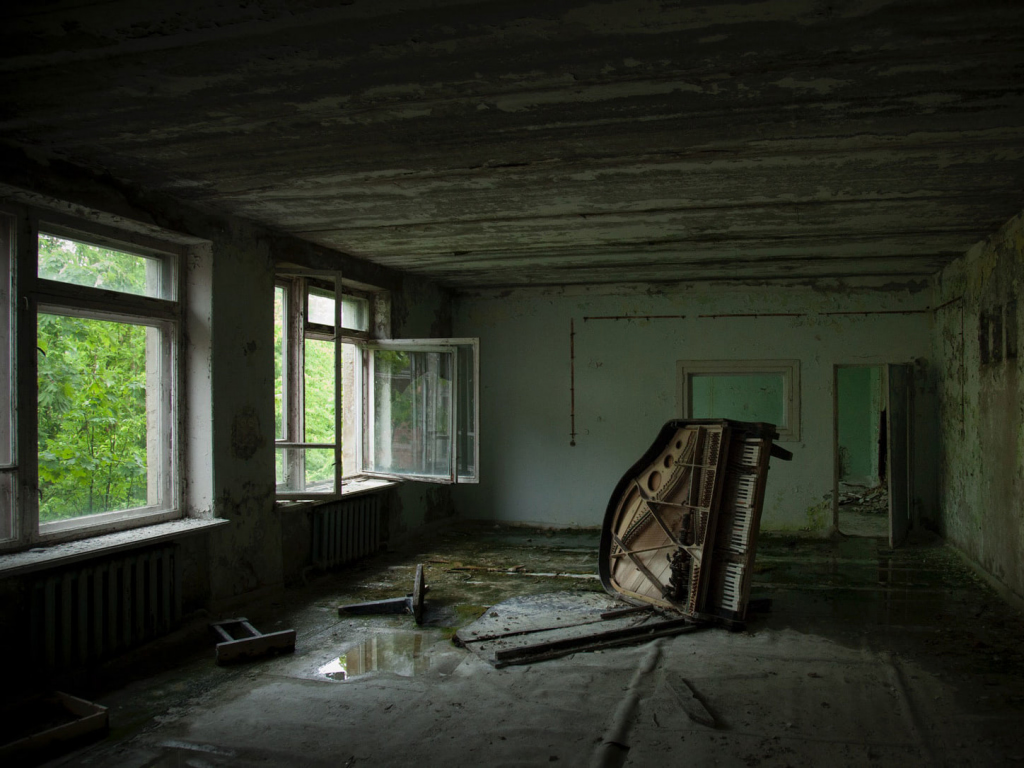This year marked the tenth anniversary of the 2011 Tohoku earthquake and tsunami, a disaster that not only left more than 19,000 people either dead or missing, but also triggered the world’s worst nuclear crisis in a quarter of a century. The 15m-high tidal wave crippled the cooling systems at the Fukushima Daiichi Power Plant leading to hydrogen explosions and reactor meltdowns. It was only the second “major accident” to be given a Level 7 classification in the history of the nuclear industry.
Around 150,000 people were forced out of their homes in the region as large amounts of radioactive material leaked into the environment. One of the most dangerous places was Namie City. Located well within the exclusion radius of 12 kilometers, it was left abandoned for six years. In March 2017, the government lifted its evacuation order for the center of the city, yet so far less than 1,000 of an original population of 17,613 have gone back as many believe it’s still not safe.
“Towns were being reclaimed by nature. I wanted to capture that as it was happening”
Despite the obvious dangers, some photographers have, with the permission of the local authorities, entered exclusion zones to get shots of these so-called “ghost towns.” Jun Nakasuji is one of the most well-known. He started taking pictures of Fukushima in 2012 and currently visits the prefecture on a monthly basis. The 52-year-old Wakayama Prefecture native previously made a name for himself with photo books focusing on locations surrounding the Chernobyl Nuclear Power Station, site of the world’s largest nuclear accident to date.
Nakasuji has been to the highly contaminated region in Ukraine on six occasions and even spent a short amount of time inside the control room of the plant’s infamous fourth reactor. This was where technicians lost control of the situation while testing the backup cooling system on the fateful morning of April 26, 1986. The two explosions that followed released 400 times more radiation than the atomic bomb dropped on Hiroshima. The blast caused two deaths within the facility. In the next three months, 29 people died from acute radiation sickness. The total number of fatalities related to the disaster is the cause of much debate with estimates ranging from a few thousand to hundreds of thousands.
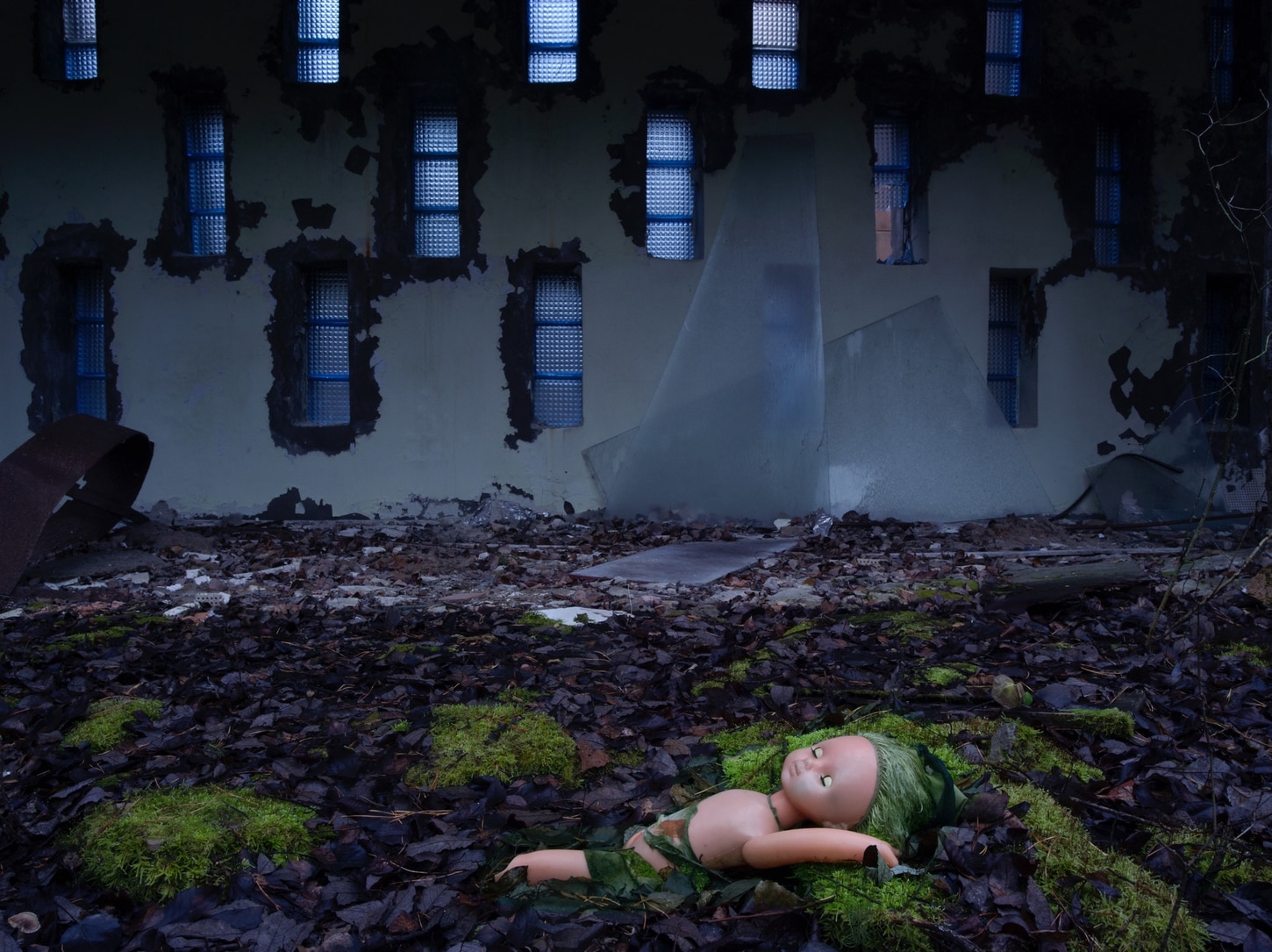
Abandoned dolls at a kindergarten in Pripyat, Chernobyl. (Dec 2011)
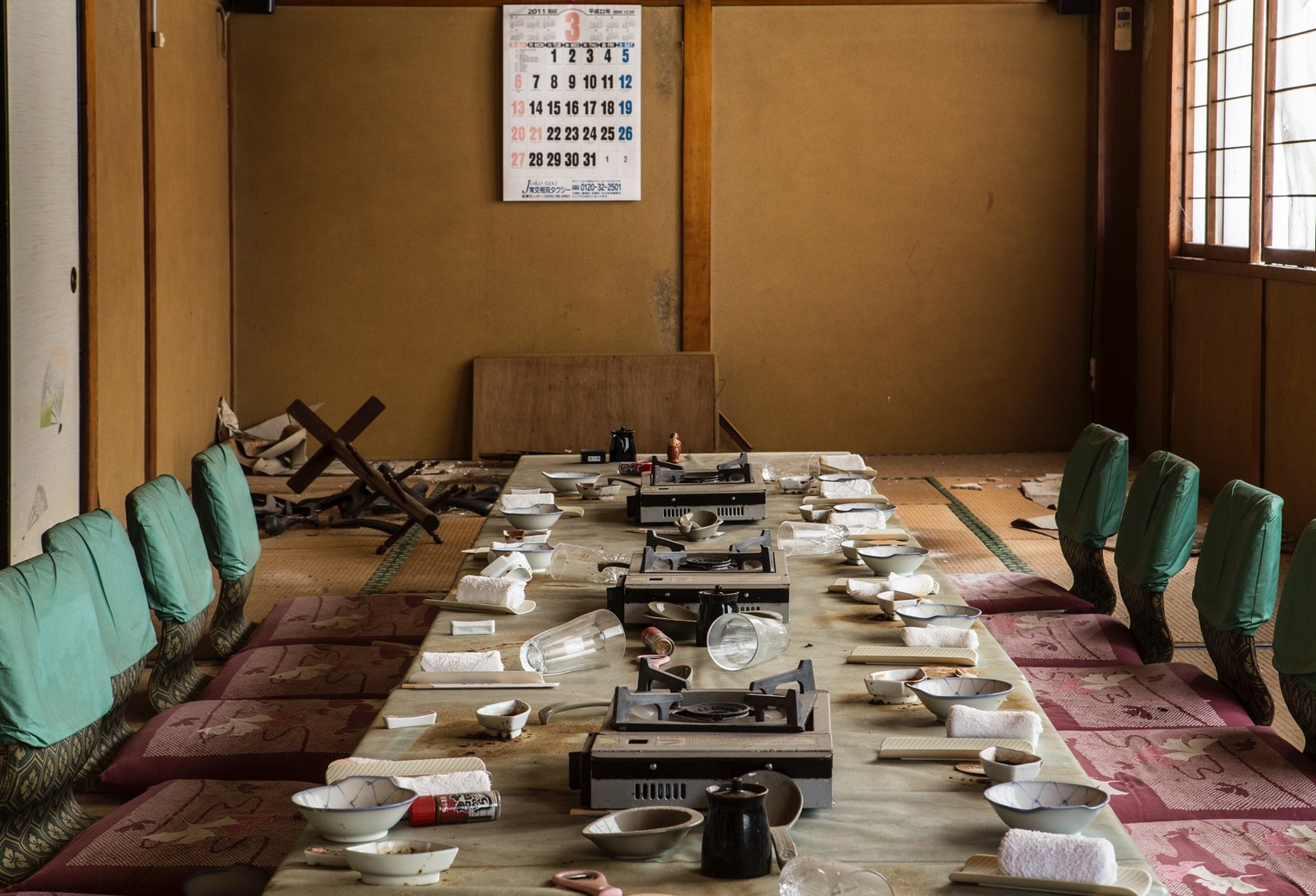
A party on the second floor of this restaurant near Tomioka Station was disrupted by the 2011 tsunami. (Oct 2015)
Most of Nakasuji’s photos are of Pripyat, the city closest to the Nuclear Power Station. A former Soviet metropolis, it was founded in 1970 to house the plant’s workers and their families. On April 27, 1986, 36 hours after the catastrophe, the near 50,000 residents in the city were finally shuttled away from the area by a fleet of some 1,200 buses. They were told it was a precautionary measure, possibly for a few days. However, after proper assessment, it was later revealed that Pripyat would remain uninhabitable for more than 24,000 years.
“The Chernobyl accident was one of the defining moments in the history of modern civilization,” Nakasuji tells TW. “Nuclear technology emerged in the 20th century and was considered the energy of the future, a resource that appeared clean and safe. Pripyat was seen as a symbol of this new modern world and then in the space of a few days that image was destroyed. When I first went there, 21 years after the catastrophe, this once thriving city had basically become a forest. A similar situation was then emerging in Fukushima with towns being reclaimed by nature. I wanted to capture that as it was happening.”
A veteran in the industry, Nakasuji learned photographic techniques in the early 90s while working for a publishing firm. In 1995 he launched his own photo office, providing fashion and travel shots for magazines, as well as taking still pictures for movies and documentaries. He also spent a lot of time shooting industrial ruins in Japan such as the eerie, yet fascinating, abandoned island of Gunkanjima in Nagasaki Prefecture. Having covered a large number of dilapidated sites in his homeland, Nakasuji then decided to take a trip to Ukraine.
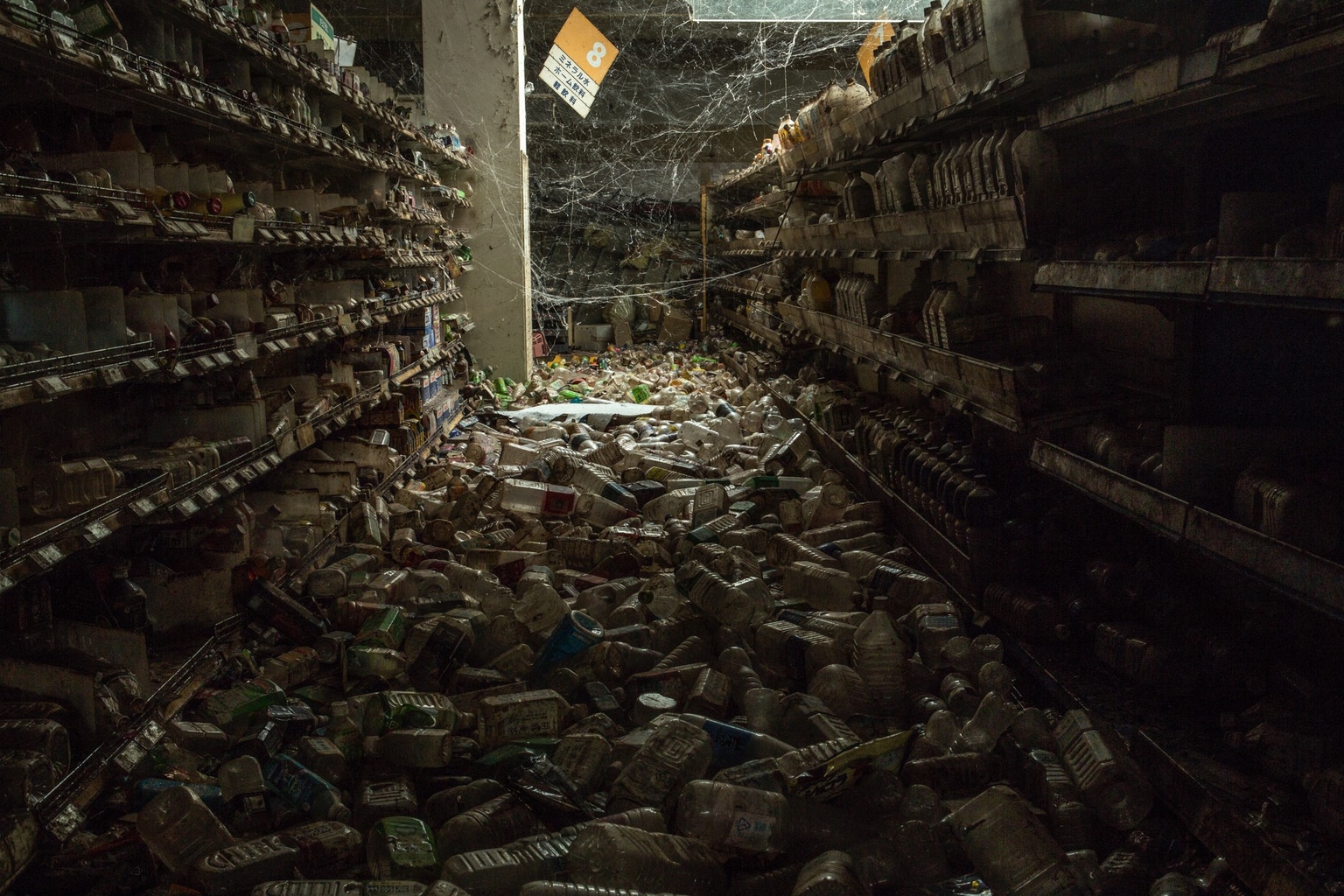
Abandoned supermarket in Tomioka. (Oct 2015)
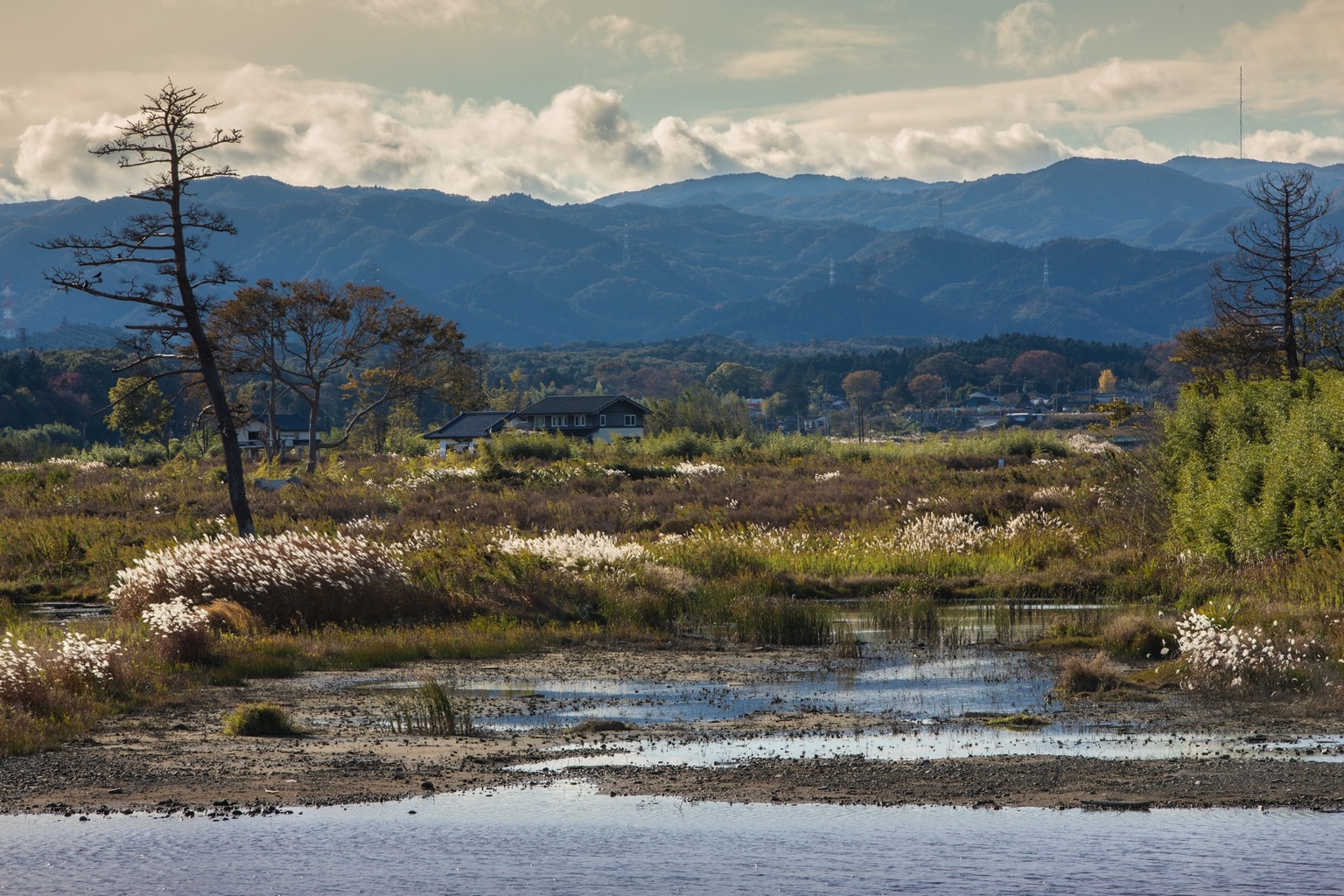
The 2011 tsunami created a wetland around the estuary of the Kumagawa River in Okuma. (Nov 2013)
“I learned about Chernobyl as a student,” recalls Nakasuji. “My major was in Chinese literature, but I had to take extra classes and the one I remember most focused on the environment. As well as the disaster in the former USSR, our professor taught us about the harmful effects of uranium mining in places such as the Ranger Uranium Mine at the Kadaku National Park in Australia, which has been home to Aboriginal people for more than 65,000 years. Hearing about that and the dangers of nuclear energy piqued my interest in the subject. However, it was another 17 years before I did anything about it.”
Before heading out to Pripyat in 2007, Nakasuji got permission from local authorities to take pictures of the city. He also arranged for a coordinator who could speak Japanese to help him get around and make sure he didn’t get into trouble with officials. According to the photographer, there were many rules and he was prohibited from entering certain structures. However, with a little persuasion and a bit of cash, “no-go areas” suddenly became accessible.
“We were in there for 15 minutes when the Geiger counter started making this loud noise”
“Government officers were constantly watching me, but when we negotiated they would pretend to be blind for a short period,” Nakasuji says, laughing. “I felt it was important to go back there on several occasions because I wanted to capture the atmosphere of the region in different seasons. It’s a fascinating place to walk around, especially when you see the wildlife roaming in and out of old buildings.”
One of the most terrifying and interesting moments for Nakasuji came when he went inside the sarcophagus of the fourth reactor on his sixth visit to the area. “I got a special permit to go in and take pictures of the control room,” he says. “I was praying before I entered. Of course, I was wearing a special suit, but the levels of radiation were crazy. We were in there for 15 minutes when the Geiger counter started making this loud noise that suggested it was time to leave.”
As for the power station in Fukushima, access has on occasion been open to reporters and photographers who, after receiving an invite, must accompany officials from Tokyo Electric Power Company (Tepco). Given his outspoken views on nuclear energy, it comes as no surprise to hear that Nakasuji has yet to be invited and is unlikely to be welcomed there any time soon, though he’s not particularly bothered about that. He has a special permit from the governor of Namie that lets him freely move around the city, including access to no entry zones up to 300m from the power plant.
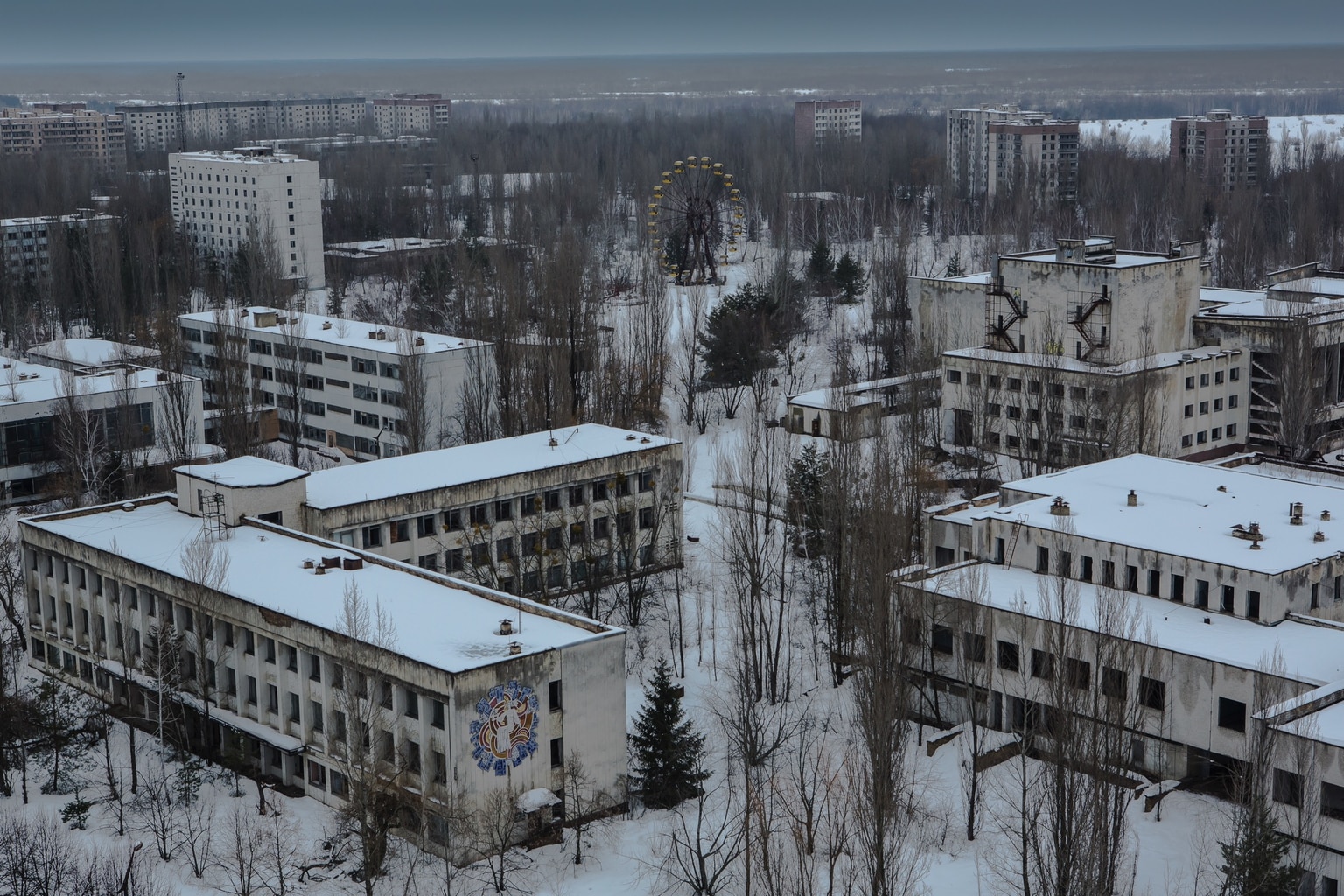
View over Pripyat, Chernobyl.
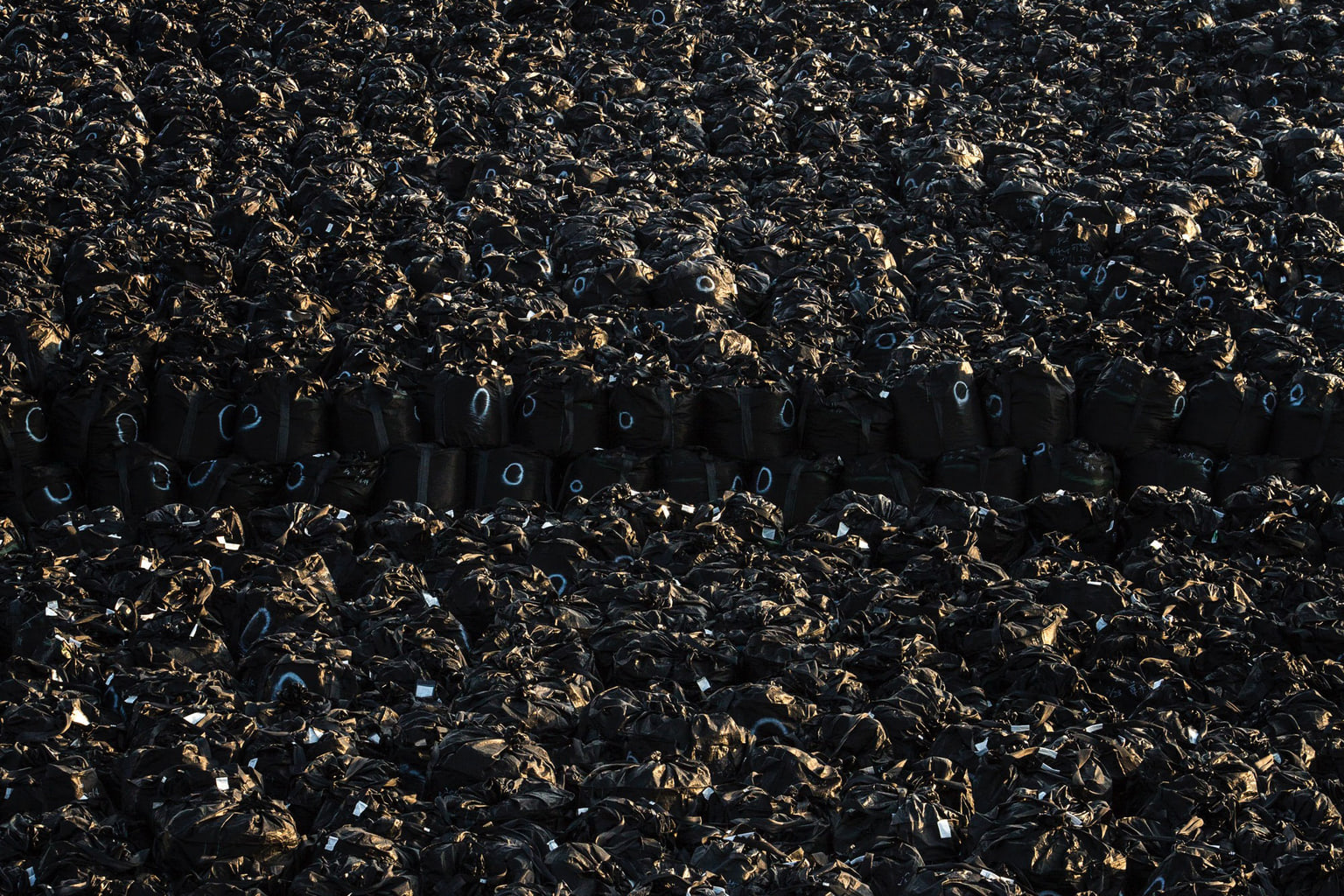
Radioactive waster after the Fukushima Daiichi nuclear disaster.
“That’s close enough,” he says. “What surprised me when I first went there in 2012 was the fact that it looked like a normal active town even though nobody lived there. As months and years passed you then saw grass coming out of pavements, trees growing here and there, as well as cows and wild boars walking on rice fields. It was gradually becoming more and more like Chernobyl. Now, even after locals in the center of the city were informed they could go back home, most have chosen to stay away and the vast majority of the buildings remain empty.
“The government is trying to say that everything is fine, but people don’t trust what they’re being told,” continues Nakasuji. “We aren’t getting the correct information. It was the same with Chernobyl. Even scientists didn’t know what the true impact of the disaster would be, and decades later many children are still getting cancer. We can’t confirm how many have become sick as a direct result of radiation poisoning, but we do know that far too many lives have been sacrificed and too many homes have been destroyed for the sake of nuclear power.”
Jun Nakasuji’s books, Revelations of Chernobyl and The Silent Views, are available on Amazon. For details about his exhibition (now ended) in Kanazawa, go to suzyj1966.wixsite.com/moyai
The first paragraph of article was updated in September 2021.

